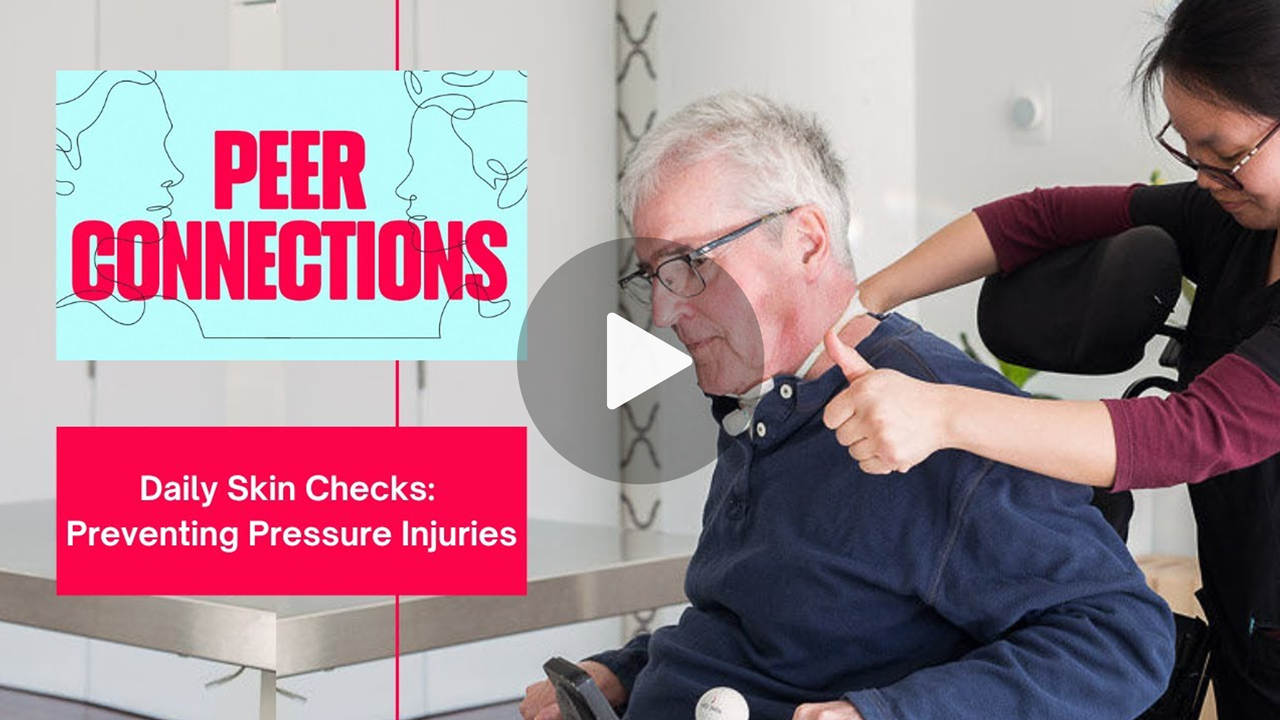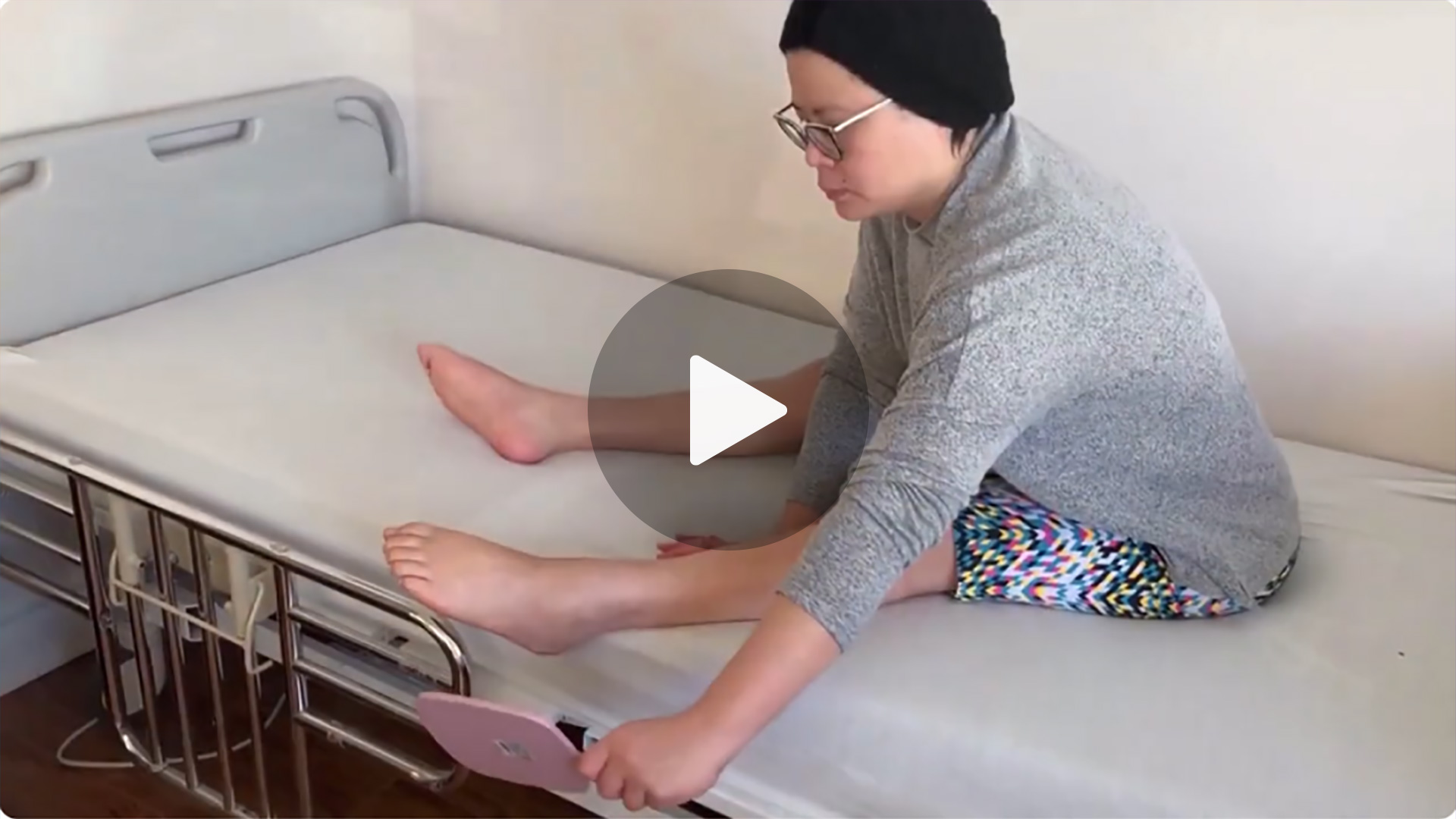People with spinal cord injury (SCI) are at increased risk of developing pressure injuries throughout their lifetime. A key aspect of prevention is performing regular daily skin checks, however a gap in knowledge is apparent among both clinicians and people with spinal cord injuries on how exactly to perform them. This video was made to show how to perform skin checks with and without assistance for people with spinal cord injuries.
Clinicians across the SCI-IEQCC Network from Parkwood Institute, Hamilton Regional Rehabilitation Centre, Ottawa Hospital Rehabilitation Center, Lyndhurst, Providence Care, and in partnership with Spinal Cord Injury Ontario, Cortree and persons with lived experiences, all contributed to this video development.
The project was led by a team at Spinal Cord Injury Ontario, Cortree including:
Sharol Cordner, Manager, Mediation and Training Services
Nancy Xia, Video Content Developer
Julie Watson, Peer Support Coordinator and Support Worker Melanie Earl
Marty Doupe, Learning Architect.
Clinical Subject Matter experts that collaborated on this video included:
Andrea Chase, BSc. BMR(PT) Ottawa Hospital Rehabilitation Centre
Jennifer Duley, MScPT; Hamilton Health Sciences Centre
Charlie Giurleo, B.Sc.OT; Parkwood Institute, St. Joseph’s Health Care London
Anna Kras-Dupuis, RN, MScN; Parkwood Institute, St. Joseph’s Health Care London
Anelina Ventre, MSc SLP (C); Toronto Rehabilitation Institute Lyndhurst Centre
Julianne Hong, BHSc; Parkwood Institute, St. Joseph’s Health Care London
Dalton Wolfe, PhD , Parkwood Institute, St. Joseph’s Health Care London.
Feedback was gathered after each round of edits to ensure the content would meet the educational needs of persons with lived experience and rehabilitation staff. This collaboration allowed for the development of an open-source skin check video resource for both clinicians and persons with lived experience.
This video is in process of being integrated within patient skin check education of the various rehabilitation sites across Ontario, Canada. The video identifies key factors to consider when completing skin checks and also demonstrates the technique on how to complete skin checks independently and with assistance.
In this video, you will learn about key signs to look for when conducting your daily skin check. Pressure injuries (also called bedsores, decubitus ulcers, pressure sores or pressure ulcers) can seriously affect people who are living with a spinal cord injury and others who use wheelchairs for daily living.
Pressure injuries are skin and tissue damage. They are caused by sitting or lying too long on one part of the body. They can also be caused by pressure combined with shear. Shear is when the skin moves one way, and the tissue underneath moves the opposite way. This can happen when you slide down in bed or transfer your weight from one surface to another.
The deeper the injury is, the harder it is to treat. That’s why it is so important to try to prevent them. You, and those who help with your care, should always watch for signs of pressure injuries. Get them treated right away. If things aren’t getting better, be sure to consult a health care provider who can help you manage pressure injuries.
Some people might experience increased risk factors for developing pressure injuries such as:
- Inadequate access to health care
- Lack of mobility
- Poor nutrition
- History of pressure injury.
Areas of skin breakdown can be a sign you may need to assess your strength, balance and posture, stretch and strengthen your muscles and joints. Moving more and making your transfers smoother can help protect your skin.
If you enjoyed this video about dealing with SCI pressure injuries, and spinal cord injury skin management tips, please remember to like, share, subscribe and leave a comment if you have any questions, suggestions, or feedback. We hope to see you here again soon!



